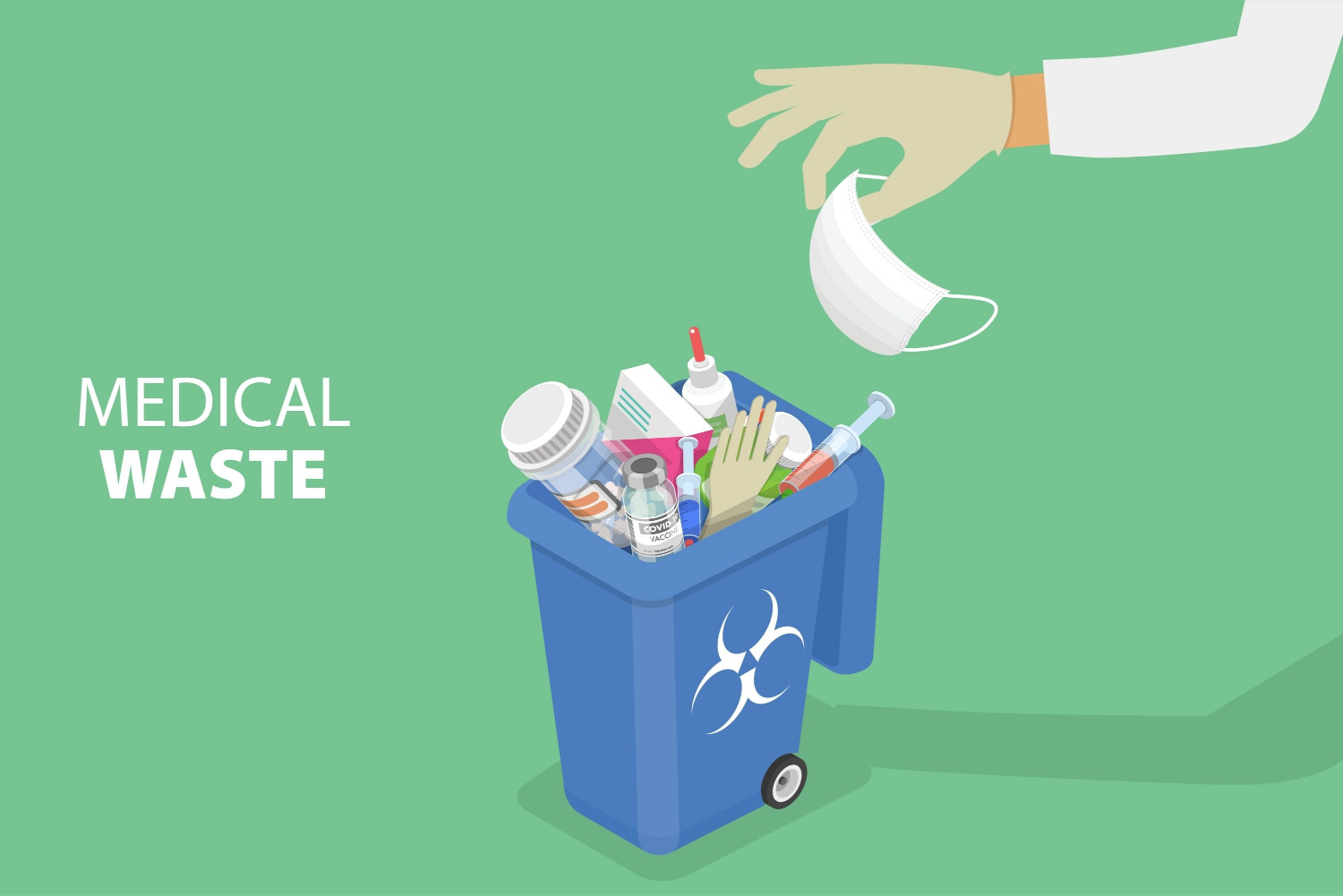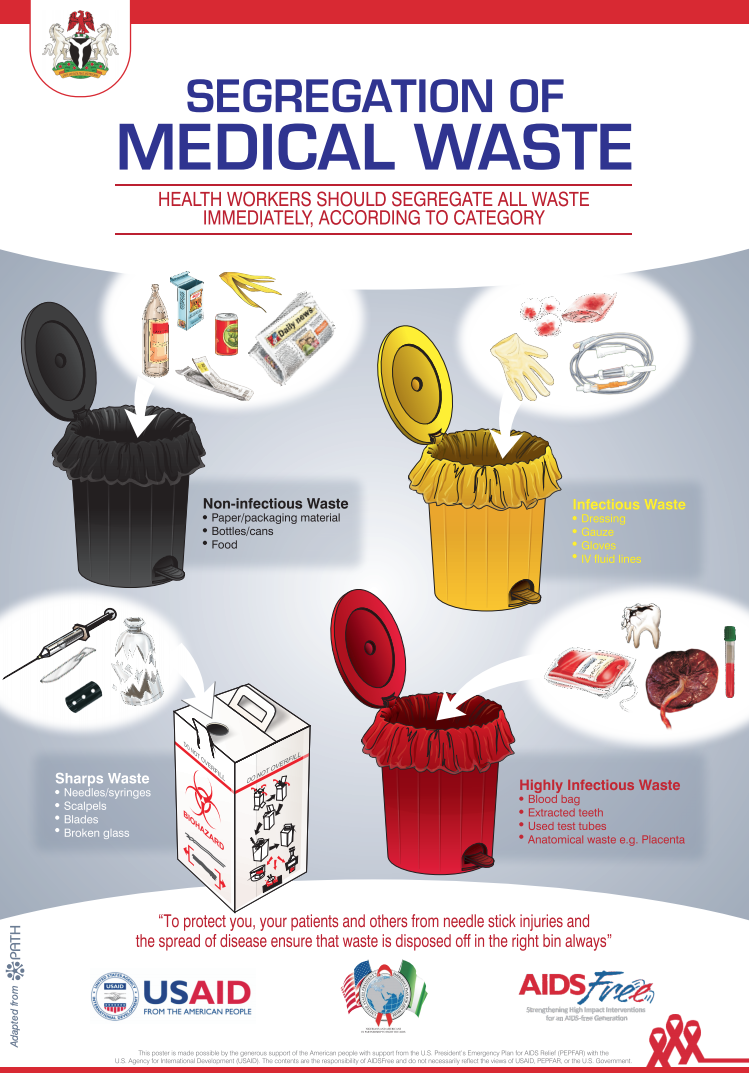Comprehensive Medical Waste Disposal Services: Ensuring a Healthy Setting
Wiki Article
Finest Practices for Medical Waste Management
Clinical waste monitoring is a vital aspect of healthcare centers' operations to make sure the safety and security of people, staff, and the setting. Applying best methods in clinical waste management is vital to reduce the threats related to contaminated materials. This consists of proper partition and classification of waste, guaranteeing its safe storage and labeling, adhering to regulatory guidelines, and using efficient disposal approaches. By following these finest techniques, medical care centers can decrease the possibility for infections, injuries, and contamination brought on by improper handling and disposal of medical waste. This introduction intends to provide an introduction of the importance of finest techniques for clinical waste administration and the succeeding areas will certainly explore each practice thoroughly - medical waste removal service.
Partition and Categorization
In the area of medical waste management, proper segregation and categorization are important methods for making certain the risk-free and efficient disposal of healthcare-related materials. Clinical waste is created from different sources, consisting of hospitals, facilities, labs, and other medical care centers. It is composed of a wide variety of items, such as needles, syringes, plasters, handwear covers, and pharmaceutical waste.Partition includes the systematic splitting up of different kinds of medical waste based on their features and possible risks. Sharps waste, such as needles and blades, should be put in puncture-resistant containers to stop injuries and the spread of contagious conditions.
Categorization is the procedure of identifying medical waste right into various categories based upon its possible risks. These groups might include contagious waste, hazardous waste, pharmaceutical waste, and general waste. By classifying waste, health care facilities can establish the proper disposal approaches and make sure compliance with neighborhood regulations and standards.
Appropriate partition and classification of medical waste not only safeguard the health and wellness of medical care workers and the general public however additionally add to the general performance and effectiveness of waste management. It reduces the danger of crashes, decreases environmental influences, and promotes accountable waste disposal methods.
Appropriate Storage Space and Labeling
To ensure the secure and efficient disposal of clinical waste, medical care facilities have to comply with correct storage space and labeling practices. WasteX Medical Waste Disposal. Correct storage space and labeling play an essential duty in keeping the integrity of clinical waste administration systems and protecting the health and wellness and safety of medical care workers, people, and the basic publicWhen it concerns storage space, it is important to have marked locations particularly designed for different types of clinical waste. These locations should be safe, well-ventilated, and furnished with suitable containers that meet governing requirements (medical waste disposal service). Segregation and categorization of waste should likewise be considered to avoid cross-contamination and prospective threats

Normal monitoring and assessment of storage space areas and containers are important to recognize any type of concerns or infractions. Staff should be trained on correct storage and labeling methods, stressing the value of compliance with procedures and guidelines.
Safe Transportation and Handling
Guaranteeing the safe and correct transport and handling of medical waste is important for keeping the honesty of waste monitoring systems and securing the health and security of all entailed. Medical waste, which consists of items infected with transmittable products, pharmaceuticals, and various other hazardous materials, should be transferred in a fashion that avoids leakages, spills, and possible contamination.To accomplish secure transportation and handling, numerous best practices must be followed. Initially, it is necessary to use puncture-resistant and leak-proof containers that are especially developed for clinical waste. These containers must be correctly sealed and identified to stop any type of unintentional exposure or messing up. Additionally, waste ought to be segregated based on its nature and kind to protect against cross-contamination.
Throughout transportation, it is very important to ensure that waste containers are firmly fastened and stored in a stable fashion. Vehicles used for carrying clinical waste ought to be outfitted with proper safety functions, such as spill control systems, to reduce the risk of any leaks or spills. Vehicle drivers need to receive training on proper handling and emergency situation feedback treatments to effectively attend to any unforeseen cases.
Additionally, the transport and handling of clinical waste should abide by all appropriate guidelines and guidelines stated by local, state, and federal authorities. WasteX Medical Waste Disposal. medical waste removal. Regular evaluations and audits should be performed to analyze conformity and recognize any type of locations for enhancement
Conformity With Regulatory Standards
Maintaining conformity with regulatory standards is essential for effective clinical waste monitoring. These guidelines are established to shield public wellness and the environment by making certain that medical waste is properly taken care of, treated, and disposed of. Conformity with regulative standards assists to stop the spread of contagious illness, lessen possible hazards, and lower the total effect of medical waste on the environment.To achieve conformity, healthcare centers need to remain educated about the certain laws regulating clinical waste administration in their territory. These regulations may differ from country to country, and also within various states or areas. It is necessary for healthcare facilities to have a detailed understanding of these guidelines and to execute proper methods and methods to make sure compliance.
One key element of conformity is the correct partition and labeling of different sorts of clinical waste. This includes separating sharps from other waste, as well as categorizing waste based on its possible threats. Healthcare facilities have to likewise ensure that medical waste is kept in ideal containers and that these containers are effectively labeled and secured.
Moreover, conformity with governing standards requires medical care centers to develop appropriate training and education programs for personnel associated with clinical waste administration. This consists of giving training on waste partition, managing, and disposal treatments, in addition to the correct use individual safety equipment.
Routine surveillance and audits are likewise important to make certain recurring compliance with regulative standards. This involves conducting normal evaluations of waste storage locations, recording waste monitoring treatments, and preserving records of garbage disposal.
Effective Disposal Methods
Medical care facilities need to utilize effective disposal approaches for appropriate management of clinical waste. Incorrect disposal of clinical waste can present major health and ecological dangers. There are a number of techniques that can be utilized to effectively take care of medical waste, making certain the safety and security of healthcare workers, people, and the basic public.One generally utilized method web is incineration. Burners can safely melt medical waste at high temperature levels, decreasing the quantity and damaging any type of possibly damaging virus. Incineration can be pricey and may release unsafe pollutants right into the air if not correctly regulated.
One more method is autoclaving, which includes subjecting the waste to high-pressure vapor. This process eliminates bacteria, viruses, and various other microbes, rendering the waste secure for disposal in regular waste streams. Autoclaving is a ecologically friendly and efficient approach, but it needs specialized devices and trained personnel.
Chemical sanitation is additionally made use of in some cases, where fluid chemicals are related to the waste to disinfect it. This method is less commonly utilized because of problems concerning the effectiveness of chemical sanitation and the capacity for chemical deposits to contaminate the atmosphere.
Along with these methods, healthcare facilities must additionally apply appropriate partition, packaging, and labeling of medical waste to ensure its risk-free handling and disposal. Normal training and education and learning of staff on proper waste management methods are essential to preserving reliable disposal methods.
Final Thought
To conclude, carrying out ideal practices for medical waste administration is important for ensuring the security of health care workers, people, and the environment. By appropriately segregating and categorizing waste, storing and classifying it properly, ensuring safe transportation and handling, abiding with regulative guidelines, and employing efficient disposal techniques, medical care centers can effectively manage and reduce the risks related to clinical waste. It is essential for healthcare companies to focus on and adhere to these finest practices to keep a sustainable and risk-free health care atmosphere.Clinical waste monitoring is an important element of medical care centers' procedures to make certain the security of individuals, personnel, and the environment. Applying best methods in clinical waste monitoring is essential to lessen the dangers associated with unsafe waste. These classifications might include infectious waste, harmful waste, pharmaceutical waste, and general waste.In verdict, carrying out best techniques for medical waste monitoring is crucial for ensuring the security of medical care workers, people, and the environment. By effectively classifying and segregating waste, saving and labeling it properly, ensuring risk-free transport and handling, conforming with regulative standards, and using effective disposal techniques, medical care facilities can properly manage and lessen the threats associated with medical waste.
Report this wiki page